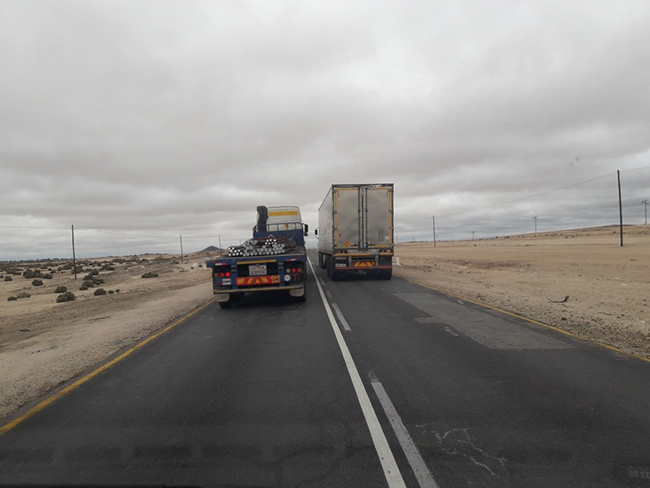Maihapa Ndjavera
Road Fund Administration (RFA) CEO Ali Ipinge has come out loud and clear that gradual increases in fuel-efficient vehicles on Namibian roads and the advent of electric vehicles are increasingly constraining the fund’s revenue.
The RFA previously reported N$2.42 billion in revenue for the past financial year, of which N$1.3 billion, or 55%, was income derived directly from the fuel levy.
“The RFA is now challenged to identify a new Road User Charging System (RUCs) or revenue sources in order to cover the funding void created from the diminishing fuel levy. Failure to adopt new funding sources subsequently leads to underfunding and extensive deterioration of the roads,” he warned yesterday at a signing occasion between three respective institutions, namely the Walvis Bay municipality, Roads Authority (RA) and RFA.
The RFA currently receives its revenue through the RUCs, which were developed with the aim of economically recovering the full cost of road expenditure from road users in an equitable manner.
The RUCs were designed to ensure revenue needed to provide and maintain roads is raised from road users (including foreign road users), rather than general taxpayers.
The RUCs were also designed to price the use of roads to improve economic efficiency in road transport by removing price distortions and charging road users according to the actual road utilisation.
This is as Namibia seeks to strategically position itself as a gateway to the southern African market through the deepened and expanded port of Walvis Bay. The result is that more cargo volumes are currently passing through the port of Walvis Bay destined for neighbouring countries, meaning more use of Namibian roads.
Ipinge observed that this then increases the overall usage of Namibian roads, particularly the roads leading to ports. Hence, a key aspect of the latest agreement signed is to ensure the continuous and timely upkeep of Namibian roads used by corridor traffic destined for local, regional and international markets.
Meanwhile, yesterday’s agreement committed N$248 million over a period of five years for the rehabilitation and widening of specifically municipal roads leading to the port of Walvis Bay. These funds will be sourced from the RUCs funding.
“The above targets the RFA set are only achievable with the support from Namibians as the road users paying your fair share of the RUCs and government support to keep our N$120 billion road assets in a good and acceptable condition,” Ipinge added.
The strategic corridor upgrades are in line with Namibia’s positioning as a logistics hub by 2025, and attaining the vision of an industrialised nation by 2030. The prospects of the green hydrogen ambitions and discoveries in the oil and energy sector will also require effective road infrastructure that can support and sustain future primary and secondary industries.


